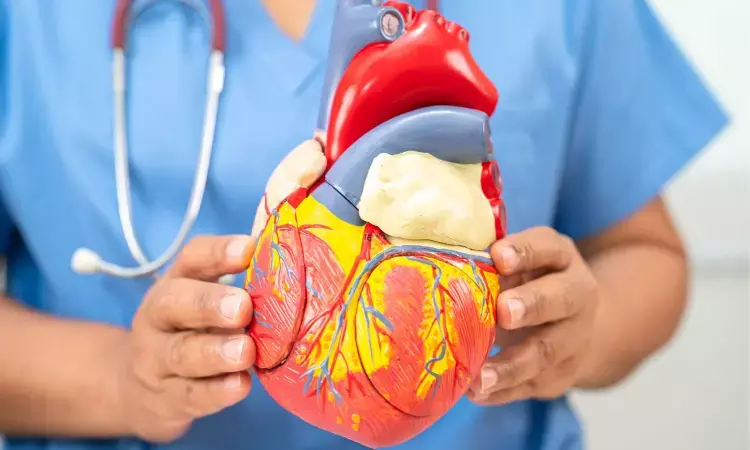- Home
- Medical news & Guidelines
- Anesthesiology
- Cardiology and CTVS
- Critical Care
- Dentistry
- Dermatology
- Diabetes and Endocrinology
- ENT
- Gastroenterology
- Medicine
- Nephrology
- Neurology
- Obstretics-Gynaecology
- Oncology
- Ophthalmology
- Orthopaedics
- Pediatrics-Neonatology
- Psychiatry
- Pulmonology
- Radiology
- Surgery
- Urology
- Laboratory Medicine
- Diet
- Nursing
- Paramedical
- Physiotherapy
- Health news
- Fact Check
- Bone Health Fact Check
- Brain Health Fact Check
- Cancer Related Fact Check
- Child Care Fact Check
- Dental and oral health fact check
- Diabetes and metabolic health fact check
- Diet and Nutrition Fact Check
- Eye and ENT Care Fact Check
- Fitness fact check
- Gut health fact check
- Heart health fact check
- Kidney health fact check
- Medical education fact check
- Men's health fact check
- Respiratory fact check
- Skin and hair care fact check
- Vaccine and Immunization fact check
- Women's health fact check
- AYUSH
- State News
- Andaman and Nicobar Islands
- Andhra Pradesh
- Arunachal Pradesh
- Assam
- Bihar
- Chandigarh
- Chattisgarh
- Dadra and Nagar Haveli
- Daman and Diu
- Delhi
- Goa
- Gujarat
- Haryana
- Himachal Pradesh
- Jammu & Kashmir
- Jharkhand
- Karnataka
- Kerala
- Ladakh
- Lakshadweep
- Madhya Pradesh
- Maharashtra
- Manipur
- Meghalaya
- Mizoram
- Nagaland
- Odisha
- Puducherry
- Punjab
- Rajasthan
- Sikkim
- Tamil Nadu
- Telangana
- Tripura
- Uttar Pradesh
- Uttrakhand
- West Bengal
- Medical Education
- Industry
Serum PCBs Linked to Increased Cardiovascular Risk in Type 2 Diabetes Patients: Study Finds

China: A recent study has highlighted a potential link between serum polychlorinated biphenyls (PCBs) and an elevated risk of cardiovascular disease (CVD) in individuals with type 2 diabetes (T2D).
"Higher serum concentrations of polychlorinated biphenyls are associated with up to a 30% increased risk of developing cardiovascular disease in individuals with type 2 diabetes," the researchers reported in The Journal of Clinical Endocrinology & Metabolism.
PCBs have been linked to an increased risk of CVD in the general population. However, their specific impact on individuals with type 2 diabetes remains unclear. To address this, Meian He, Huazhong University of Science and Technology, Wuhan, Hubei, China, and colleagues explored the association between serum PCB concentrations and the incidence of CVD among individuals with T2D, aiming to determine whether PCB exposure poses an additional risk in this vulnerable group.
For this purpose, the researchers utilized data from the Dongfeng-Tongji cohort, which began in 2008 and continued until December 31, 2018. The study included 2,806 participants with T2D, of whom 1,180 developed cardiovascular disease (CVD) during the follow-up period. The researchers employed Cox proportional hazard regression models and the quantile g-computation method to analyze the associations between serum PCB levels and incident CVD risk.
The investigation uncovered the following findings:
- Compared with the first quartile, the risk of incident cardiovascular disease (CVD) was elevated by 25%, 30%, and 28% in the fourth quartile of serum concentrations of PCB28, PCB52, and PCB101, respectively.
- Similar results were observed for lower-chlorinated PCBs (PCB28 + PCB52 + PCB101), with hazard ratios of 1.257 and 1.346 in the third and fourth quartiles, respectively.
- Quantile g-computation analysis revealed that mixed exposure to PCBs was associated with an increased risk of CVD.
- The top three contributing PCB congeners to the risk of CVD were PCB101, PCB52, and PCB28.
The study found that serum polychlorinated biphenyls independently increased the risk of incident cardiovascular disease among patients with type 2 diabetes, with lower-chlorinated PCBs playing a major role. These PCBs may contribute to CVD by inducing atherosclerosis.
"However, the study faced limitations, including the single-site detection, which may not fully represent long-term trends in PCB concentrations. Additionally, only serum PCBs were measured, and the potential effects of exposure to other pollutants and unmeasured confounders could not be ruled out, despite adjustments for various covariates," the researchers concluded.
Reference:
An, J., Zhang, S., Cheng, X., Jia, C., Zhang, X., Yan, Y., Zhao, Z., Liu, Y., Guan, Y., Li, P., Zhang, J., & He, M. The Association Between Serum Polychlorinated Biphenyls and Incident Cardiovascular Disease Among Type 2 Diabetes. The Journal of Clinical Endocrinology & Metabolism. https://doi.org/10.1210/clinem/dgaf014
Dr Kamal Kant Kohli-MBBS, DTCD- a chest specialist with more than 30 years of practice and a flair for writing clinical articles, Dr Kamal Kant Kohli joined Medical Dialogues as a Chief Editor of Medical News. Besides writing articles, as an editor, he proofreads and verifies all the medical content published on Medical Dialogues including those coming from journals, studies,medical conferences,guidelines etc. Email: drkohli@medicaldialogues.in. Contact no. 011-43720751


